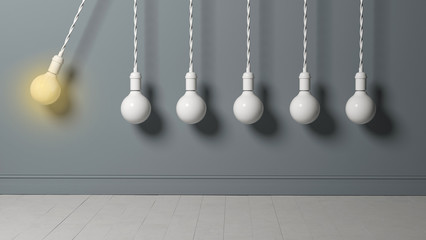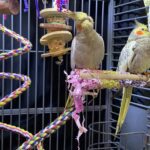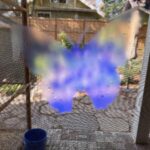
UV (Ultraviolet) light myths
There is a lot of misinformation about ultraviolet light and what it means for your bird. I will attempt to dispel the most common ones.
Myth #1: Any ultraviolet light can cause a bird to synthesize Vitamin D
There are actually two relevant types of UV light: UVA and UVB. Most articles about birds and lighting don’t specify with type and just say “ultraviolet” light.
So, first let’s establish that it’s UVB light that is required for Vitamin D synthesis.
During exposure to sunlight 7-dehydrocholesterol in the skin absorbs UVB radiation and is converted to previtamin D3 which in turn isomerizes into vitamin D3.
Sunlight and Vitamin D: A Global Perspective on Health—Dermato-Endocrinology—’Jan 2013
UV light causes the body to produce vitamin D (specifically, UVB), which is essential for life.
Ultraviolet—Wikipedia
In humans, both UVA and UVB are responsible for secondary effects on the skin such as erythema (sunburn) or tanning, but UVB is the only range associated with the photobiochemical synthesis of vitamin D3.
Vitamin D and Ultraviolet B Radiation Considerations for Exotic Pets—Journal of Exotic Pet Medicine—’Oct 2014
I provide three references because so many people get this wrong.
So, when you hear the term “ultraviolet” it doesn’t necessarily mean that UVB is present. The only case where it’s true is if you expose your bird directly to the sun, even if clouds are present.
The Sun emits ultraviolet radiation at all wavelengths, including the extreme ultraviolet where it crosses into X-rays at 10 nm.
Ultraviolet—Wikipedia
Here are some common suggestions you’ll find for giving your bird light exposure that will provide them with Vitamin D and why they won’t necessarily work.
Putting a bird cage in front of a window
This won’t work because only UVA can pass through a modern window.
Since glass absorbs all UVB radiation, exposure of the skin to sunlight that passes through glass, plexiglass, and plastic will not result in any production of vitamin D3 in the skin.
Sunlight and Vitamin D: A Global Perspective on Health—Dermato-Endocrinology—’Jan 2013
If you put your bird in front of an open window, then you’ve accomplished the equivalent of having the bird outside.
Provide full spectrum lighting
Unfortunately for consumers, “full spectrum” is a marketing term and has no strict definition or regulations. Drawing on my own research of products, rarely does a full spectrum bulb have UVA light and I’ve never encountered one with UVB light. If anyone finds one, I would love to know!
Provide a black light
Black light is a common name for what is a UVA light. While providing UVA is useful to a bird, it will have no effect on Vitamin D production.
Myth #2: Only bird species with exposed skin can synthesize Vitamin D from the sun
Vitamin D synthesis in humans begins when UVB rays from the sun are absorbed by the skin. Some people make the argument that birds don’t have exposed skin (some have a little), therefore they get no Vitamin D benefit from the sun.
It’s kind of an amazing trick, but when your bird preens, s/he may be kicking off a process that ends with producing Vitamin D.
The secretion of the tail gland contains 7-dehydrocholesterol. After the secretion has been spread over the feathers by the beak, this compound is converted by ultraviolet light to provitamin D3, which is in chemical equilibrium with vitamin D3. Hence if exposed to sunlight, birds are able to synthesize vitamin D3.5 Uptake of the vitamin occurs while the bird is caring for the feathers.
Medical History and Physical Examination in Companion Animals (Second Edition)—J.T. Lumeij—2009
Interesting side note about the preen gland.
[…]certain avian species (e.g., Amazon parrots, hyacinth macaws) do not have a uropygial gland[…]
Uropygial Gland Disease Conditions—’Clinical Veterinary Advisor—2013
Don’t let anyone talk you into avoiding all sun exposure for your bird. A knowledgeable avian vet who keeps up on the latest research will agree.
Myth #3: UVB light will cause cataracts
Let’s look at the different sources of light.
Natural light
As with almost anything, even water, too much of a good thing can become a bad thing. There is pretty solid agreement that exposing a bird to 5-10 minutes of direct sun is beneficial to them. Here is one source that indicates that the risk for cataracts requires more exposure.
[…] It has been surmised that in July at noon at 40° latitude […] lens damage due to UVB exposure would take 245 hours, but the cornea could potentially be damaged in 23 minutes of direct exposure.
Vitamin D and Ultraviolet B Radiation Considerations for Exotic Pets—Journal of Exotic Pet Medicine—’Oct 2014
Note that it says potentially. Like many things, you may need to weigh the health benefits of sunshine and fresh air against a very low to zero chance of a problem. Just set a timer to be safe and be sure to provide a shady spot in a cage or where the bird is sitting.
Artificial light
You’ll hear many more claims about cataracts (and also sunburn) being caused by artificial UVB lighting. First off, it’s worth mentioning that there are no studies indicating this to be the case. Secondly, the UVB output of even the most powerful bulbs is dramatically lower than direct sunlight.
Without going into the bewildering details, intensity of UV radiation is called irradiance. Here are some irradiance numbers from various locations around the globe, which also mention the weather conditions, such as sunny/clear or cloudy.
| Location | Irradiance |
|---|---|
| Equator, noon, SEA 0.0, (Henriksen et al., 1989) | 265 |
| Melbourne, Australia (37.8 S) clear, January 29, SEA 19.8, maximum irradiance,(McKenzie et. al., 1993) | 263 |
| Kodiakanal, India (10.14 N) sunny, April, SEA 0.0, (Sharma and Srivastava, 1992) | 260 |
| Miami, Florida (26 N) noon, June 21, summer solstice SEA 2.3, (Frederick and Snell, 1988) | 253 |
| Lauder, New Zealand (45 S) clear, December 28, SEA 21.8 maximum irradiance, (McKenzie et. al., 1992; 1993) | 212 |
| Midlands, England (53 N), sunny, July 28, peak intensity SEA 30, (Webb and Steven, 1987) | 178 |
| Neuherberg, Germany (48.2 N) clear, July 13, SEA 26.3 maximum irradiance, (McKenzie et. al., 1993) | 175 |
| Longyearbyen, Norway (78.2 N), sunny, July 15 SEA 54.8, (Henriksen et al., 1989) | 55 |
| Vantaa, Finland (60 N), hazy, sunny, July, noon, (Kolari et al., 1986) | 55 |
| Fort Worth, Texas (32.8 N), shaded, diffuse, March 2, 3 pm, (Gehrmann, 1987) | 15 |
This comes from “A comparison of the UV-B irradiance of low-intensity, full-spectrum lamps with natural sunlight” and the measurements come from various research papers indicated in the table above.
Unfortunately, there is scant data on the actual UV output of bulbs other than from the manufacturers, but the link referenced above measured two of them and I measured the third.
| UVB bulbs | Irradiance at 6 inches | Irradiance at 12 inches | Irradiance at 18 inches |
|---|---|---|---|
| Duro-Test Vita-Lite; 20 watt, 24" | 3.1 | 1.1 | 0.7 |
| Sylvania F20T12/350 BL; 20 watt, 24" | 4.3 | 2.6 | 1.1 |
| Avian Sun™ 5.0 UVB | 25 | 10 | 4 |
Even at 6 inches, you can see the light output is dramatically lower than natural light. Depending on how your lights and perches are mounted, it’s difficult to get the light closer than 18 inches to the birds. At that distance, you’re looking at irradiance values of 1.1 to 4.0, far less than Texas on a cloudy day (15.0).
It’s a personal decision on exposing your bird to sunlight or artificial light. Personally, I’d recommend it, but the main point of this article is to provide scientific information and to dispel a lot of the misinformation out there so you can make an informed decision.
Myth #4: Full spectrum bulbs contain UV light
When recommending avian lighting, the suggestion is often that you should buy a full-spectrum bulb. However, if you are wanting UV light, a bulb labelled as full-spectrum is unlikely to put out any UV light at all.
The term “full spectrum” doesn’t have a strict definition when it applies to light bulbs. Wikipedia clearly explains the difference between full spectrum and full-spectrum lighting.
Full-spectrum light is light that covers the electromagnetic spectrum from infrared to near-ultraviolet, or all wavelengths that are useful to plant or animal life; in particular, sunlight is considered full spectrum […]
“Full-spectrum” is not a technical term when applied to an electrical light bulb. Rather, it implies that the product emulates some important quality of natural light.
Full-spectrum light—Wikipedia
More importantly, use of the term is not regulated nor is there any kind of certification organization. So, when you see full-spectrum on the box for a light bulb, it is typically one of four options:
- The manufacturer is misusing the term for marketing purposes when the bulb has no full spectrum qualities at all
- It’s a bulb that only spans the visible spectrum
- It’s a bulb that includes visible spectrum and UV-A
- It’s a bulb that includes visible spectrum, UV-A, and UV-B
Sadly, the term is meaningless. You really have two options. First, scour the packaging and see if there is any mention of UV-A or UV-B. Second, contact the manufacturer for clarification.
Myth #5: Diet is better than sun for Vitamin D
It’s commonly thought that diet is the optimal way to ensure that birds get the right amount of Vitamin D. It turns out that you can end up with too much or too little Vitamin D with diet alone and adding sunlight or UVB lighting is your best option.
Note: The research for this myth mostly come from one article in a scientific journal, but it cites research from 69 different sources so it’s pretty comprehensive!
There are two ways to get Vitamin D:
- Supplementation, typically in food
- UVB from sunlight or artificial lighting
While people tend to focus on Vitamin D deficiency, there are actually two concerns regarding Vitamin D.
Hypovitaminosis (low Vitamin D)
Low Vitamin D can lead to all sorts of problems. Birds can even get rickets!
Although vitamin D is critical to calcium/phosphorus homeostasis, bone formation and remodeling, there is evolution-based variation between species in vitamin D metabolism and susceptibility to rickets and osteomalacia.
The pathology of vitamin D deficiency in domesticated animals: An evolutionary and comparative overview—International Journal of Paleopathology—December 2018
And here it’s noted that sunlight or UVB supplemention are in some cases required to have adequate Vitamin D levels. Whether it’s required could depend on the bird species or whether they are getting the minimal amount of Vitamin D from the diet.
Based on these more recent findings, it should not be surprising that hypovitaminosis D may also be an underrecognized disease process in domesticated animals that are not provided access to natural sunlight, or at a minimum, exposure to artificial supplementation of UVB.
Vitamin D and Ultraviolet B Radiation Considerations for Exotic Pets—Journal of Exotic Pet Medicine—October 2014
Hypervitaminosis (high Vitamin D)
Because Vitamin D is fat soluble, it doesn’t just pass out through the urine, so overdosing is possible. Anecdotally, one of my vets says that he sees fairly equal numbers of low vitamin levels as excessive vitamin levels.
Here’s why it’s important.
Vitamin D toxicity can result in dystrophic mineralization, which occurs when excess calcium is deposited in soft tissues in the body. Deposition of mineral into soft tissues can lead to pain as well as organ dysfunction and failure.
Vitamin D and Ultraviolet B Radiation Considerations for Exotic Pets—Journal of Exotic Pet Medicine—October 2014
Does it come from the diet?
Cases diagnosed with hypervitaminosis D are typically associated with excessive dietary vitamin D.
Vitamin D and Ultraviolet B Radiation Considerations for Exotic Pets—Journal of Exotic Pet Medicine—October 2014
If you’re worried about too much Vitamin D with UVB, there’s no need.
[…] there have been no reports of hypervitaminosis D in any species directly related to UVB exposure
Vitamin D and Ultraviolet B Radiation Considerations for Exotic Pets—Journal of Exotic Pet Medicine—October 2014
For the extra geeky, here’s a brief explanation why.
Studies performed by Holick elucidated a mechanism in the skin of vertebrates to protect against the overproduction of vitamin D3. After several minutes of direct exposure, the skin contains less previtamin D3 and more biologically inert products, specifically lumisterol and tachysterol.
Vitamin D and Ultraviolet B Radiation Considerations for Exotic Pets—Journal of Exotic Pet Medicine—October 2014
Sunlight is best
Research shows that if your bird’s diet is deficient in Vitamin D, it doesn’t matter as long as they get UVB exposure.
In a study evaluating supplementation with UVB radiation in conjunction with various diets, it was found that the plasma vitamin D levels were significantly higher in the seed-fed group compared with those fed pellets, suggesting that UVB radiation may be an adequate mechanism in psittacines for acquiring vitamin D for animals fed deficient diets.
Vitamin D and Ultraviolet B Radiation Considerations for Exotic Pets—Journal of Exotic Pet Medicine—October 2014
Additionally, there’s evidence that the quality of Vitamin D is better if obtained via UVB.
There has been debate as to whether vitamin D3 produced in the skin is equivalent to that found in dietary sources. Both seem to have the same biologic activity; however, the half-life of vitamin D3 produced in the skin is much longer because it is 100% bound to vitamin D–binding protein.
Vitamin D and Ultraviolet B Radiation Considerations for Exotic Pets—Journal of Exotic Pet Medicine—October 2014
Conclusion?
There’s a lot to digest here, but I can summarize the points.
- You can overdose on Vitamin D with a supplemented diet. A processed (pelleted) diet can be problematic, especially if your birds don’t eat much else. Either introduce more fresh foods or more seed into their diets.
- Provided the diet doesn’t cause high Vitamin D, exposing your birds to UVB will ensure the optimal level is reached.
Myth #6: Windows block all UV light
There is disagreement about what effect windows have on UV light. However, this is something that can be easily measured with UV meters. The end result is that windows only partially block UVA light, while completely blocking UVB light.
Ordinary window glass passes about 90% of the light above 350 nm, but blocks over 90% of the light below 300 nm.
Ultraviolet—Wikipedia
Below 330 nm (UV-B and UV-C), almost 100% is blocked by normal glass
UV FAQs—International Ultraviolet Association
Note: If your windows have a special UV coating applied to them, then you should check with the manufacturer to see how it would affect UV light.
The conclusions from this:
- UVA, the type of light known for enhancing bird vision significantly, is only partially blocked by glass. This means that putting a bird in a room with abundant light coming through windows could have a great impact on their lives.
- UVB light is blocked by glass, so there is no Vitamin D benefit from being in a sunlight-filled room with closed windows.

